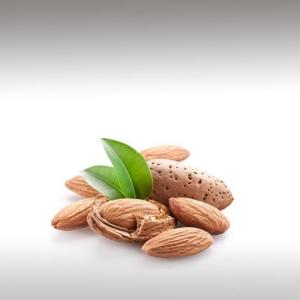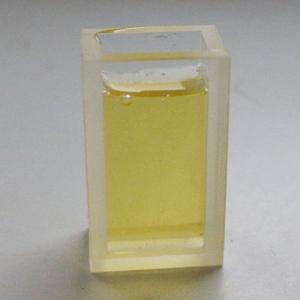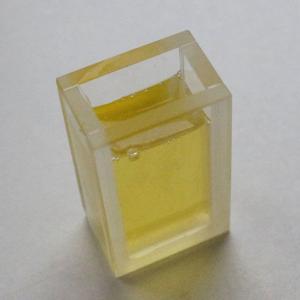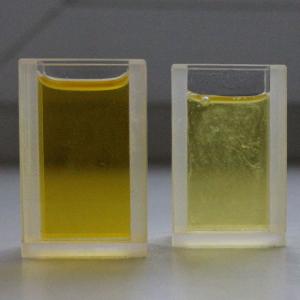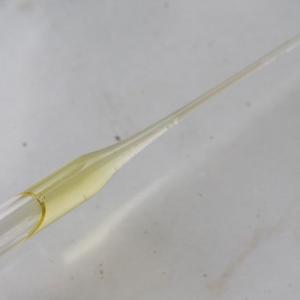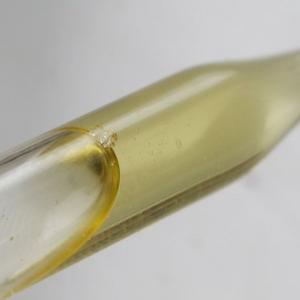
ALMOND OIL (PRUNUS AMYGDALUS DULCIS) - BASE OILS

BASE / GENERAL DATA
Information submited: March 11, 2014 Modified: March 29, 2018 By: OperaDreamhouse
The Almond (Prunus Dulcis, Prunus Amygdalus, Amygdalus Communis, Amygdalus Dulcis) is a species of tree native to the Middle East and South Asia.
Almond tree originates from warm regions of the Near and Middle East, where, according to archaeologists started using the nuts of wild trees 780,000 ago. In Iran was cultivated 5,000 years ago in China - 3000 ago, and in Greece - 2500 years ago.
The Sweet Almond tree has dark-colored bark, rose to white flowers in early spring, and dry-fleshed fruit with a pitted stone containing the nut. The Prunus Amygdalus Dulcis produces Almonds, which are formed with an exterior hull, an interior shell, and in the middle of it all, a seed.
The fruit of the Almond is a drupe, consisting of an outer hull and a hard shell with the seed (which is not a true nut) inside. Shelling Almonds refers to removing the shell to reveal the seed. Almonds are a rich source of oil, with values ranging between 36 to 60% of seed dry mass.
Sweet Almond should not be confused with Bitter Almond, which contains Amygdalin and can be broken down into the poisonous substance Hydrocyanic acid (Cyanide).
Chemical structure:
Pure Saweet Almond oil contains many nutrients including calcium, magnesium, phosphorous, and vitamins E, B9 (Folate) and B12. These nutrients nourish the body on the outside when applied topically.
A study by Venkatchalam and Sathe suggests Almonds contain approximately 44% oils, of which 62% is monounsaturated oleic acid(an omega-9 fatty acid), 29% islinoleic acid (apolyunsaturated omega-6 essential fatty acid), and 9% is saturated fatty acid:
Natural Almond oil in 36 g (28-30 Almonds) 32 g / 30 ml:
Calories - 208 - 205 calories
Protein - 7,7 g - 4,9 g
Carbohydrate - 7,1 g - 6,9 g
Fats - 18,2 g - 19,2 g
Saturated - 1,4 g - 1,8 g
Monounsaturated - 11,6 g - 12,4 g
Polyunsaturated - 4,4 g - 4,0 g
Fibers - 4,2 g - 1,2 g
Almond tree originates from warm regions of the Near and Middle East, where, according to archaeologists started using the nuts of wild trees 780,000 ago. In Iran was cultivated 5,000 years ago in China - 3000 ago, and in Greece - 2500 years ago.
The Sweet Almond tree has dark-colored bark, rose to white flowers in early spring, and dry-fleshed fruit with a pitted stone containing the nut. The Prunus Amygdalus Dulcis produces Almonds, which are formed with an exterior hull, an interior shell, and in the middle of it all, a seed.
The fruit of the Almond is a drupe, consisting of an outer hull and a hard shell with the seed (which is not a true nut) inside. Shelling Almonds refers to removing the shell to reveal the seed. Almonds are a rich source of oil, with values ranging between 36 to 60% of seed dry mass.
Sweet Almond should not be confused with Bitter Almond, which contains Amygdalin and can be broken down into the poisonous substance Hydrocyanic acid (Cyanide).
Chemical structure:
Pure Saweet Almond oil contains many nutrients including calcium, magnesium, phosphorous, and vitamins E, B9 (Folate) and B12. These nutrients nourish the body on the outside when applied topically.
A study by Venkatchalam and Sathe suggests Almonds contain approximately 44% oils, of which 62% is monounsaturated oleic acid(an omega-9 fatty acid), 29% islinoleic acid (apolyunsaturated omega-6 essential fatty acid), and 9% is saturated fatty acid:
Natural Almond oil in 36 g (28-30 Almonds) 32 g / 30 ml:
Calories - 208 - 205 calories
Protein - 7,7 g - 4,9 g
Carbohydrate - 7,1 g - 6,9 g
Fats - 18,2 g - 19,2 g
Saturated - 1,4 g - 1,8 g
Monounsaturated - 11,6 g - 12,4 g
Polyunsaturated - 4,4 g - 4,0 g
Fibers - 4,2 g - 1,2 g

SPIRITUAL PRACTISES DATA
Information submited: March 11, 2014 Modified: March 29, 2018 By: OperaDreamhouse
Almond tree and its fruits have been revered since ancient times and that’s why it is mentioned in the Bible as a symbol of hope and fertility of the Promised Land. In ancient Egypt, people used to put Almonds in the bread of the pharaoh. Thanks to the ancient Greeks Almond tree reached the Roman Empire, the Romans even called it “Greek nut”.
In the Hebrew Bible, the Almond was a symbol of watchfulness and promise due to its early flowering. In the Bible the Almond is mentioned ten times, beginning with Book of Genesis 43:11, where it is described as "Among the best of fruits".
Domesticated almonds appear in the Early Bronze Age (3000-2000 BC) such as the archaeological sites of Numeria (Jordan), or possibly a little earlier. Another well-known archaeological example of the Almond is the fruit found in Tutankhamun's tomb in Egypt (1325 BC), probably imported from the Levant.
In an old fable, Phyllis was deserted by her lover Demophoon and died of grief. The gods changed her into a barren Almond tree. When Demophoon returned and embraced the tree, it burst into leaf and flower - a symbol of true love transcending death.
Oil burn for money, riches and wisdom. Almond wood makes a nice magickal wand.
Sweet Almond oil is one of the primary carrier oils for ritual and anointing blends.
In the Hebrew Bible, the Almond was a symbol of watchfulness and promise due to its early flowering. In the Bible the Almond is mentioned ten times, beginning with Book of Genesis 43:11, where it is described as "Among the best of fruits".
Domesticated almonds appear in the Early Bronze Age (3000-2000 BC) such as the archaeological sites of Numeria (Jordan), or possibly a little earlier. Another well-known archaeological example of the Almond is the fruit found in Tutankhamun's tomb in Egypt (1325 BC), probably imported from the Levant.
In an old fable, Phyllis was deserted by her lover Demophoon and died of grief. The gods changed her into a barren Almond tree. When Demophoon returned and embraced the tree, it burst into leaf and flower - a symbol of true love transcending death.
Oil burn for money, riches and wisdom. Almond wood makes a nice magickal wand.
Sweet Almond oil is one of the primary carrier oils for ritual and anointing blends.

MEDICINE / HEALTH DATA
Information submited: March 11, 2014 Modified: March 29, 2018 By: OperaDreamhouse
This brilliant and extremely useful composition presented to us by
nature in an Almond nut or in a small drop of Almond oil was used for
medicinal purposes and beauty treatments for centuries.
The oil is good for application to the skin as an emollient, and has been traditionally used by massage therapists to lubricate the skin during a massage session. Almond oil has Vitamins A, C, E and D, minerals, proteins, carbohydrates, bioflavonoids.
Vitamins A and E are also called “Vitamin of youth”, strengthen cell membranes and have a positive impact on the elasticity and adaptability of skin cells to environmental influences. They are very good antioxidants.
Vitamin D plays an important role for the immune system and regulates the levels of calcium and phosphorus in the blood.
The available Vitamins of group B (B1-thiamine, B2-riboflavin, B3- niacin, B9-folic acid) improve blood circulation, help for the proper healing of damaged tissues, smooth functioning of brain and eyes, strengthen metabolism.
For healing purposes Almond oil is used internally and externally, by using its anti-inflammatory and pain relieving properties, a soft effect and penetration in depth in healing massages.
The most pleasant way of internalreception is as salad oil, especially mixed with other vegetable oils, and for base is used Olive oil (50%):
Almond oil is good for:
Colds, pneumonia and bronchitis (The oil relieves coughs and hoarseness).
Chronic constipation and colitis.
Based on animal studies, Sweet Almond may lower blood sugar levels. Caution is advised when using medications that may also lower blood sugar.
Early studies in humans and animals report that whole Almonds may lower total cholesterol and low-density lipoprotein (LDL / "bad" cholesterol) and raise high-density lipoprotein (HDL / "good" cholesterol").
It's impact is even more effective than the Olive oil. Theoretically, Almonds may add to the effects of herbs or supplements that lower blood cholesterol levels, such as Fish oil, Garlic, guggul, or Niacin.
For pain, especially headache is recommended Sage with 3-4 drops of Peppermint and 30 drops of Lavender essential oil added to 30 ml almond oil. A little known is the fact that Lavender essential oil has not only relaxing but also analgesic effects and in combination with Almond oil can be used in many cases to relieve muscle spasms and cramps in the limbs.
Almond oils recommended for skin diseases and allergic skin reactions, for psoriasis, itching, painful dermatitis and eczema.
Almond oil also contains beneficial monounsaturated and linoleic fatty acids, specifically omega-6 and Omega-9. Combined with omega-3, these healthy fatty acids have been scientifically proven to significantly reduce the likelihood of dying from cardio-vascular related problems.
Researchers are especially interested in their level of monounsaturated fats, as these appear to have a beneficial effect on blood lipids (High in monounsaturates and low in saturates).
Also, if applied directly, Almond oil can often provide relief from muscular pain. Ingesting Almond oil is also great for boosting the immune system, which will in turn lessen your chance of becoming ill.
Side effects:
Clinical studies indicate that Prunus Amygdalus Dulcis oil does not cause irritation or sensitivity in individuals who do not have Almond allergies.
It was also discovered that Prunus Amygdalus Dulcis seed meal does not create dermal irritation. However, it is important to note that individuals with allergies to other members of the Rosaceae family may experience irritation when using products containing either Prunus Amygdalus Dulcis oil or Seed Meal.
The oil is good for application to the skin as an emollient, and has been traditionally used by massage therapists to lubricate the skin during a massage session. Almond oil has Vitamins A, C, E and D, minerals, proteins, carbohydrates, bioflavonoids.
Vitamins A and E are also called “Vitamin of youth”, strengthen cell membranes and have a positive impact on the elasticity and adaptability of skin cells to environmental influences. They are very good antioxidants.
Vitamin D plays an important role for the immune system and regulates the levels of calcium and phosphorus in the blood.
The available Vitamins of group B (B1-thiamine, B2-riboflavin, B3- niacin, B9-folic acid) improve blood circulation, help for the proper healing of damaged tissues, smooth functioning of brain and eyes, strengthen metabolism.
For healing purposes Almond oil is used internally and externally, by using its anti-inflammatory and pain relieving properties, a soft effect and penetration in depth in healing massages.
The most pleasant way of internalreception is as salad oil, especially mixed with other vegetable oils, and for base is used Olive oil (50%):
Almond oil is good for:
Colds, pneumonia and bronchitis (The oil relieves coughs and hoarseness).
Chronic constipation and colitis.
Based on animal studies, Sweet Almond may lower blood sugar levels. Caution is advised when using medications that may also lower blood sugar.
Early studies in humans and animals report that whole Almonds may lower total cholesterol and low-density lipoprotein (LDL / "bad" cholesterol) and raise high-density lipoprotein (HDL / "good" cholesterol").
It's impact is even more effective than the Olive oil. Theoretically, Almonds may add to the effects of herbs or supplements that lower blood cholesterol levels, such as Fish oil, Garlic, guggul, or Niacin.
For pain, especially headache is recommended Sage with 3-4 drops of Peppermint and 30 drops of Lavender essential oil added to 30 ml almond oil. A little known is the fact that Lavender essential oil has not only relaxing but also analgesic effects and in combination with Almond oil can be used in many cases to relieve muscle spasms and cramps in the limbs.
Almond oils recommended for skin diseases and allergic skin reactions, for psoriasis, itching, painful dermatitis and eczema.
Almond oil also contains beneficial monounsaturated and linoleic fatty acids, specifically omega-6 and Omega-9. Combined with omega-3, these healthy fatty acids have been scientifically proven to significantly reduce the likelihood of dying from cardio-vascular related problems.
Researchers are especially interested in their level of monounsaturated fats, as these appear to have a beneficial effect on blood lipids (High in monounsaturates and low in saturates).
Also, if applied directly, Almond oil can often provide relief from muscular pain. Ingesting Almond oil is also great for boosting the immune system, which will in turn lessen your chance of becoming ill.
Side effects:
Clinical studies indicate that Prunus Amygdalus Dulcis oil does not cause irritation or sensitivity in individuals who do not have Almond allergies.
It was also discovered that Prunus Amygdalus Dulcis seed meal does not create dermal irritation. However, it is important to note that individuals with allergies to other members of the Rosaceae family may experience irritation when using products containing either Prunus Amygdalus Dulcis oil or Seed Meal.

BEAUTY / COSMETICS DATA
Information submited: March 11, 2014 Modified: March 29, 2018 By: OperaDreamhouse
Almond oil good for:
To treat and relieve the condition after sunburn.
To refresh and maintain the skin colour.
For the treatment of acne and scars of different rashes, very effective is the combination of almond oil (25%) and tea tree oil (75%).
Lightens dark circles.
Cures chapped lips and body rashes.
Good As a makeup remover.
Almond oil is rich in vitamins A, B1, B2, B6 and E, and as a result is great for the skin.
Almond oil quickly affects and makes the skin of any type and any age to feel wonderful - nourished, hydrated and velvety soft and smooth. Absolutely suitable for babies, pregnant women and breastfeeding women.
Almond oil good moisturizer for all skin types, simply because it is easily absorbed. One of the most important Sweet Almond oil benefits is that for dry and chapped skin. Using Sweet Almond oil will surely make your skin soft and supple. Applying Sweet Almond oil is a natural beauty treatment. You can use Almond oil for dark circles. It will also rehydrate the skin and reduce the fine lines and wrinkles around the eyes.
Sweet Almond oil is commonly used as a skin conditioning agent to lubricate and soften the skin or as a lubricant in hair products to promote shine and manageability. It acts as an emulsifying agent, binding water and oil together.
This oil features a light consistency and is not oily, so it is readily absorbed by the skin. It has been included in formulas designed to reduce fine lines on the face, moisturize the skin, soothe dry, chapped lips, and relieve itching.
It is a rich emollient that moisturizes the skin with renewed hydration, helping to minimize signs associated with premature aging. It creates a glow to the skin when absorbed, can be used to reduce discoloration or inflammation, or to neutralize skin and hair irritations. It is frequently used in fragrance, lipstick, sunscreen, skin care, night skin care, and cleansing formulas.
Almond oil is an ingredient of the most used products from cosmetics series for babies and children, because of its substance of nutrients. It comes in a synergistic interaction with other natural oils and herbal extracts to nourish the skin in depth and make it silky soft, smooth and perfectly hydrated.
Massages with Almond oil are recommended during pregnancy, after birth, for sudden weight gain or weight loss, against stretch marks and stretching of the skin all over the body;
Indeed Almond oil is often used as the basis for many other procedures and massage blends. Almond oil massage will help to get rid of dry skin, impurities, dead cells. It soaks easily in the skin and gives a glowing touch to it.
The benefits from using Sweet Almond oil include reducing discoloration on the skin, adding moisture to chapped or chafed skin and lips, improves the overall complexion and prevents dry or flaking skin. Since almond oil features Vitamin E, it also helps to reduce inflammation and irritation of the skin. Improves complexion and retains glow.
Use of Almond oil can cure or prevent dandruff and itchiness of the scalp. It removes the dryness and replaces with varnished, shiny and healthy hair. It rectifies and prevents split ends from developing and the hindrance of growth of the hair. Also being an ingredient in many shampoos and conditioners, use of Sweet Almond oil cleanses the hair regularly and assisting the long and nourishing hairs to grow.
For tired and aging skin, removes small and deeper wrinkles, especially around the eyes, lips and nose. To prevent their occurrences begin with regularly massages of the face and body with Almond oil at an earlier age, especially if you are often on “a diet”.
Almond oil has a fine texture, so as a result it will not leave your skin feeling greasy or block your pores.
To treat and relieve the condition after sunburn.
To refresh and maintain the skin colour.
For the treatment of acne and scars of different rashes, very effective is the combination of almond oil (25%) and tea tree oil (75%).
Lightens dark circles.
Cures chapped lips and body rashes.
Good As a makeup remover.
Almond oil is rich in vitamins A, B1, B2, B6 and E, and as a result is great for the skin.
Almond oil quickly affects and makes the skin of any type and any age to feel wonderful - nourished, hydrated and velvety soft and smooth. Absolutely suitable for babies, pregnant women and breastfeeding women.
Almond oil good moisturizer for all skin types, simply because it is easily absorbed. One of the most important Sweet Almond oil benefits is that for dry and chapped skin. Using Sweet Almond oil will surely make your skin soft and supple. Applying Sweet Almond oil is a natural beauty treatment. You can use Almond oil for dark circles. It will also rehydrate the skin and reduce the fine lines and wrinkles around the eyes.
Sweet Almond oil is commonly used as a skin conditioning agent to lubricate and soften the skin or as a lubricant in hair products to promote shine and manageability. It acts as an emulsifying agent, binding water and oil together.
This oil features a light consistency and is not oily, so it is readily absorbed by the skin. It has been included in formulas designed to reduce fine lines on the face, moisturize the skin, soothe dry, chapped lips, and relieve itching.
It is a rich emollient that moisturizes the skin with renewed hydration, helping to minimize signs associated with premature aging. It creates a glow to the skin when absorbed, can be used to reduce discoloration or inflammation, or to neutralize skin and hair irritations. It is frequently used in fragrance, lipstick, sunscreen, skin care, night skin care, and cleansing formulas.
Almond oil is an ingredient of the most used products from cosmetics series for babies and children, because of its substance of nutrients. It comes in a synergistic interaction with other natural oils and herbal extracts to nourish the skin in depth and make it silky soft, smooth and perfectly hydrated.
Massages with Almond oil are recommended during pregnancy, after birth, for sudden weight gain or weight loss, against stretch marks and stretching of the skin all over the body;
Indeed Almond oil is often used as the basis for many other procedures and massage blends. Almond oil massage will help to get rid of dry skin, impurities, dead cells. It soaks easily in the skin and gives a glowing touch to it.
The benefits from using Sweet Almond oil include reducing discoloration on the skin, adding moisture to chapped or chafed skin and lips, improves the overall complexion and prevents dry or flaking skin. Since almond oil features Vitamin E, it also helps to reduce inflammation and irritation of the skin. Improves complexion and retains glow.
Use of Almond oil can cure or prevent dandruff and itchiness of the scalp. It removes the dryness and replaces with varnished, shiny and healthy hair. It rectifies and prevents split ends from developing and the hindrance of growth of the hair. Also being an ingredient in many shampoos and conditioners, use of Sweet Almond oil cleanses the hair regularly and assisting the long and nourishing hairs to grow.
For tired and aging skin, removes small and deeper wrinkles, especially around the eyes, lips and nose. To prevent their occurrences begin with regularly massages of the face and body with Almond oil at an earlier age, especially if you are often on “a diet”.
Almond oil has a fine texture, so as a result it will not leave your skin feeling greasy or block your pores.

FOOD / COOKING DATA
Information submited: March 11, 2014 Modified: March 29, 2018 By: OperaDreamhouse
The oil is expeller pressed from the kernels of the nut to produce an oil that is light yellow in color with a distinctive soft marzipan like flavor. It is more used by the chefs in the kitchen of the Caribbean.
In the Middle Ages Almonds were used to prepare soups and desserts. It can be used to add a subtle nutty flavor to salad dressings and stir fry's, but is also delicious in cookies, muffins and cakes.
Substitute for plain cooking oil in baked goods such as pastries, muffins, and breads. It is surely a healthier substitute to salted butter and shortening in baking.
In the Middle Ages Almonds were used to prepare soups and desserts. It can be used to add a subtle nutty flavor to salad dressings and stir fry's, but is also delicious in cookies, muffins and cakes.
Substitute for plain cooking oil in baked goods such as pastries, muffins, and breads. It is surely a healthier substitute to salted butter and shortening in baking.
Almond oil should be treated as more of a finishing oil, added just before the meal is served.
COMMENTS
No comments.
Newest mixtures containing Almond Oil (Prunus Amygdalus Dulcis):

Home made dry rose petal oil
July 23, 2015

Exotic - smelling body scrub
July 11, 2015


